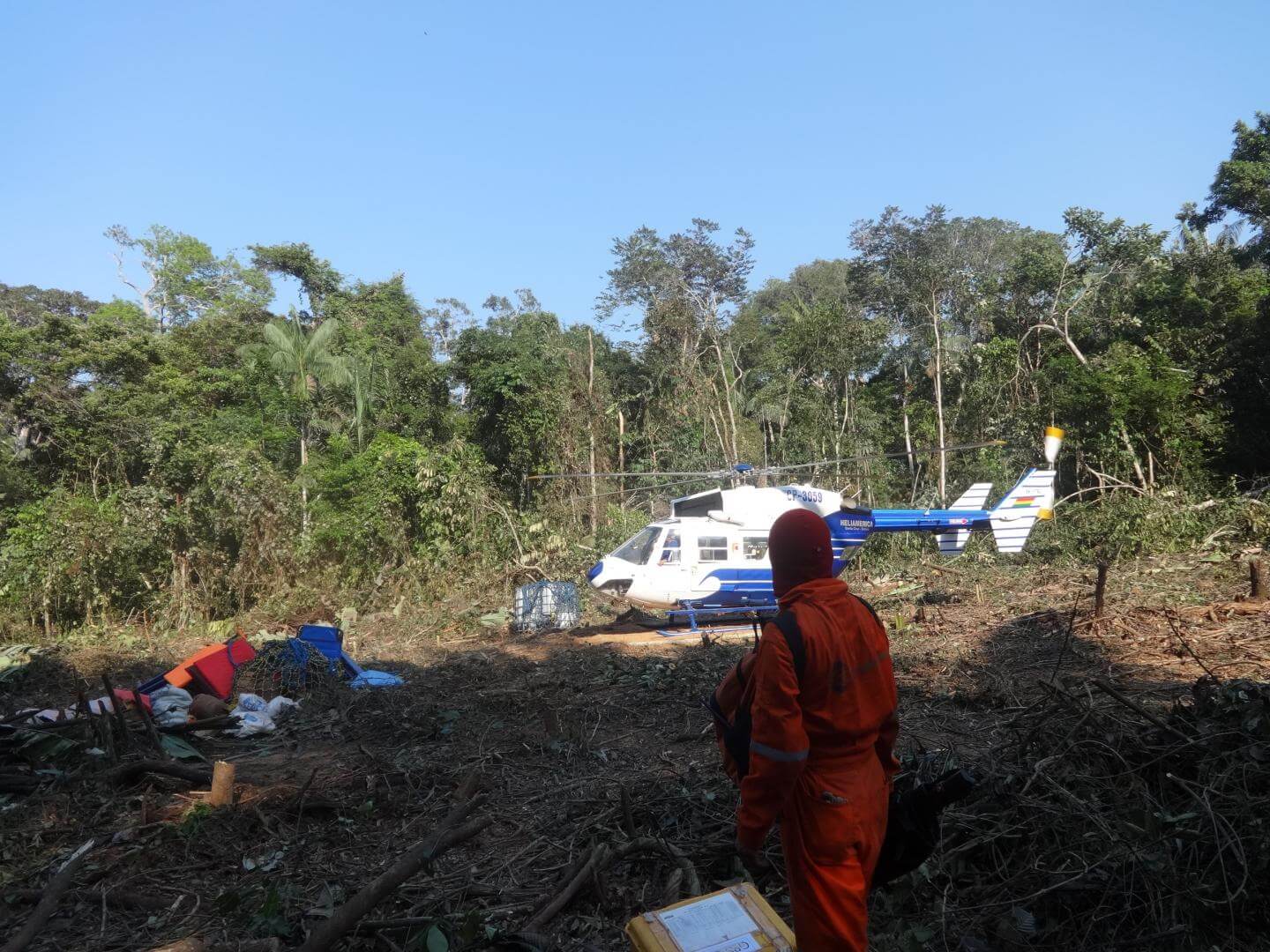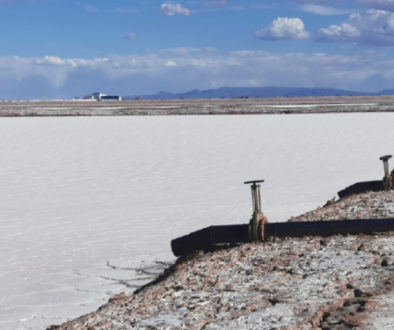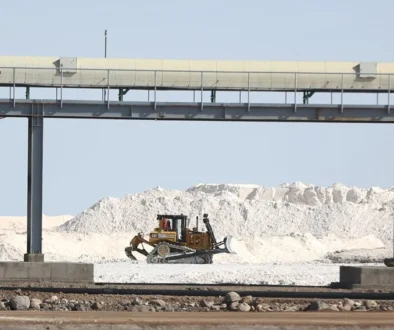Risk of genocide (Intercontinental Cry, 23.2.17)
Institutions ask IACHR to protect uncontacted amazon peoples endangered by petroleum exploration in Bolivia
Over the past 10 years, the area of oil extraction in Bolivia has increased from three million hectares in 2007[1] to more than thirty one million[2]. Precisely 28.84% of the surface of Bolivia is part of this expanded oil extraction border, which is superimposed over indigenous territories, rural communities, protected areas, and the Amazon.
In April of 2016, oil exploration began in the Bolivian Amazon with the signing of a contract between the Bolivian state-run oil company YPFB and BGP Inc., a Chinese-owned company responsible for seismic exploration in Nueva Esperanzablock, an area that is geographically superimposed over the indigenous territories of Tacana II and Aroana, in the north of the La Paz department.
Between these two indigenous territories exists a fringe of jungle designated as public land that extends northeast to the Pando department and southwest to Madidi National Park. The Tacana and Araona Peoples cohabit this area of the Amazon rainforest with the uncontacted Toromona Peoples, and, for generations, have respected their state of isolation.
Oil exploration was preceded by negotiations in which the Tacana managed to impose certain conditions on the oil companies, among them respect for the existence and rights of the Toromona and in case of risk of contact, the adoption of a protocol to safeguard their condition of isolation. The existence of those living in voluntary isolation, presumably the Toromona, and the obligation of the oil companies to respect their condition of isolation is specifically outlined in the Environmental Impact Study, which is required for companies to obtain an environmental license. This is to say that both the oil companies and the state authorities knew that uncontacted people, living in isolation and in a vulnerable situation, occupied the exploration zone.
But in spite of these agreements, both the oil companies and state authorities have not completed their assumed obligations.
Since the month of August, the Toromona have presented evidence of being pressured. This pressure stems from the presence in their territories of more than 1500 workers entering with equipment; the creation of over 200 camps and heliports; permanent helicopter flights carrying men, equipment, and supplies; and by the use of 190,000 kilograms of explosives in underground detonations along thousands of kilometers of seismic lines. Toromona resistance to these activities first manifested as isolated indications of their presumed presence: fresh footprints; bent branches left as signs for work crews; the occasional theft of provisions meant for workers; fires of unknown origin heading towards the camps from the south; and later, highly dangerous moments of indirect contact.

Between September and November, events began to grow more and more tenuous, with the potential of spiraling into violence: on Sept. 17, 2016, a relatively large group of Toromona men, women, and children stealthily advanced towards three workers, intimidating them with threatening shouts over several hours. On Sept. 18, a mobile camp and its heliport were cut-off presumably by the Toromona, who had snuck up to camp and began to strike a drum with the equipment they had found; the event lasted all night and resulted in the immediate evacuation and dismantling of the camp. On Nov. 7, another team working on installing a communications antenna was besieged during the night by a group–presumably the Toromona–who damaged engines and equipment and surrounded the site to the sound of shouting and drums.
The Indigenous Peoples of the Tacana II territory and their environmental monitors have been carefully registering and documenting indications and evidence. They have also appealed to authorities to adopt safeguarding measures and to freeze exploratory activities for constituting an imminent risk of forced contact to the Toromona, the consequence of which could be their extermination.
However, the state authorities have ignored their petitions and the president of YPFB has denied the existence of the uncontacted peoples—advocating instead for continued oil exploration without modification.
On Oct. 31, after the press picked up on the events between the workers and the uncontacted peoples, the government-appointed Peoples Advocate convened an International Meeting on Uncontacted, Isolated, and Vulnerable peoples. In this event experts evaluated the evidence presented by environmental monitors and Tacana II leaders and concluded that the facts merited an immediate freeze on oil exploration and the adoption of measures to effectively guarantee the rights and existence of those who are believed to be the Toromona. However, the Peoples Advocate stated that immediate action should be taken, but only in the form of regulation, which is not yet approved.
Considering the inaction of the State, the attitude of the Peoples Advocate, work crews entering into deep areas of the jungle where the Toromona live, and testemonies of rescue crews hired by the companies overflying in search of the Toromona; The Documentation and Information Center of Bolivia (CEDIB), the Center for Judicial Research (CEJIS), and the indigenous people of Tacana II decided to request precautionary measures to the Inter-American Commission on Human Rights (IACHR) to protect the uncontacted peoples. The petition annexed extended documentation that recorded and provided evidence of the imminent risk that the oil exploration creates for the integrity and existence of these people who live in voluntary isolation.
On Jan. 23 2017, the IACHR communicated to the petitioners that their application had been received, and informed them that they had asked the Bolivian state to issue a report documenting the enquired facts and their response to the petition for precautionary measures.
Today, the petitioners and the people of Bolivia continue to wait for the contents of the report that the State should have released on Feb 7, 2017. Meanwhile, state authorities maintain their silence, despite the genuine risk of genocide that the Toromona face—a risk that grows with each passing day.
[1] In 2007, the land area of petroleum extraction under the management of Evo Morales was exactly 2,884,117 hectares-
[2] Currently the land area of petroleum extraction as defined by the government comprises 31,685,190 hectares
(https://intercontinentalcry.org/a-risk-of-genocide/)

